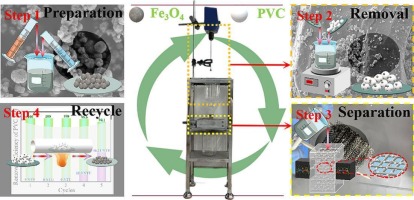
The Hidden Danger Within Our Water
In an era of escalating pollution, a concealed and hazardous menace has permeated one of Earth’s most crucial resources—water. Micro- and nanoplastics, despite their tiny dimensions, stretching from less than one millimeter down to mere nanometers, have disseminated their synthetic footprint from the ocean depths to the drinking supply we rely on. These scarcely visible and difficult-to-detect particles not only invade biological systems but can also accumulate in vital human organs, leading to long-lasting health concerns.
“Nanoparticles can’t be seen with the unaided eye or identified using standard microscopes, making them extremely challenging to pinpoint and eliminate from water treatment facilities,” cautions Henrique Eisi Toma, a professor at the University of São Paulo’s Institute of Chemistry. Toma and his research team have formulated an innovative approach to tackle this issue and potentially mitigate the enduring damage caused by plastic pollution.
Nature-Inspired Remedy
Confronted with the widespread issue of microplastic pollution, Toma’s group sought inspiration from nature for a resolution—specifically, from mussels. Renowned for their tenacity in adhering to rocks, shells, and other surfaces amidst tumultuous marine conditions, mussels have led to the development of a polymer-based adhesive solution.
The researchers merged this knowledge with cutting-edge materials science, creating magnetic nanoparticles coated with a compound known as *polydopamine*. Extracted from dopamine, polydopamine replicates the adhesive characteristics of mussels, permitting the nanoparticles to bond with plastic debris in the water.
“Polydopamine firmly attaches to plastic pieces in water, allowing the magnetic nanoparticles to seize them. This unwanted material can then be extracted from the water using a magnet,” Toma elaborates.
These magnetic nanoparticles, paired with polydopamine, form a formidable tool: as polydopamine clings to plastics, the magnetic traits of the nanoparticles facilitate straightforward collection and separation from water through magnetic filtration.
More than Just Removal: A Sustainable Method
This innovative approach extends beyond merely extracting plastic from water. Aware of the dual necessity for cleanup and sustainability, the team included enzymes like *lipase*—known for its capacity to decompose PET (polyethylene terephthalate), a prevalent plastic in bottles and packaging.
Utilization of enzymes breaks down PET into its fundamental monomers, which eliminates waste and opens up avenues for plastic recycling. Rather than remaining toxic pollutants, these degraded polymers may eventually be transformed into new plastic products, reflecting a more circular model of production and waste management.
The potential of this technique reaches into real-world water treatment infrastructures, holding promise that transcends laboratory studies. Utilizing a potent imaging method called hyperspectral Raman microscopy, Toma’s team was able to observe and verify the functionality of the nanoparticle system in real-time. This technique not only showcased the capture of microplastics but also illustrated the breakdown of their chemical bonds, revealing a feasible route for integrated water purification and plastic recycling.
The Road Ahead
While tackling microplastic and nanoplastic pollution poses significant challenges for environmental scientists, this groundbreaking strategy offers renewed optimism. With further advancements, such techniques could be adapted for large-scale water purification systems, concentrating on the removal of contaminants and aiding in the protection of both natural water sources and human health.
The broader consequences extend far beyond wastewater treatment. The ability to capture and repurpose the plastic waste accumulating in our oceans and waterways could serve as a vital instrument in diminishing dependence on virgin plastic production, facilitating a transition towards a more sustainable future.
By leveraging biological insights, state-of-the-art materials science, and interdisciplinary collaboration, the progress made in Brazil has demonstrated the timeless truth that nature often provides the foundation for future innovations.
Glossary:
– **Polydopamine**: A polymer produced from dopamine that imitates the adhesive properties of mussels and can stick to a range of surfaces.
– **Nanoplastics**: Plastic particles measuring less than 0.001 millimeters.
– **Microplastics**: Small plastic pieces up to 1 millimeter in size, formed from the degradation of larger plastic debris.
– **Hyperspectral Raman microscopy**: A technique for imaging that monitors chemical activities by pinpointing unique molecular signatures.
– **PET (Polyethylene terephthalate)**: A widely used plastic material typically found in beverage bottles and packaging.
Quiz:
1. **What natural element inspired the approach for capturing microplastics?**
Answer: The adhesive abilities of mussels
2. **What kind of nanoparticles are employed in this new approach?**
Answer: Magnetic nanoparticles coated with polydopamine
3. **Which enzyme is utilized to decompose PET plastic?**
Answer: Lipase